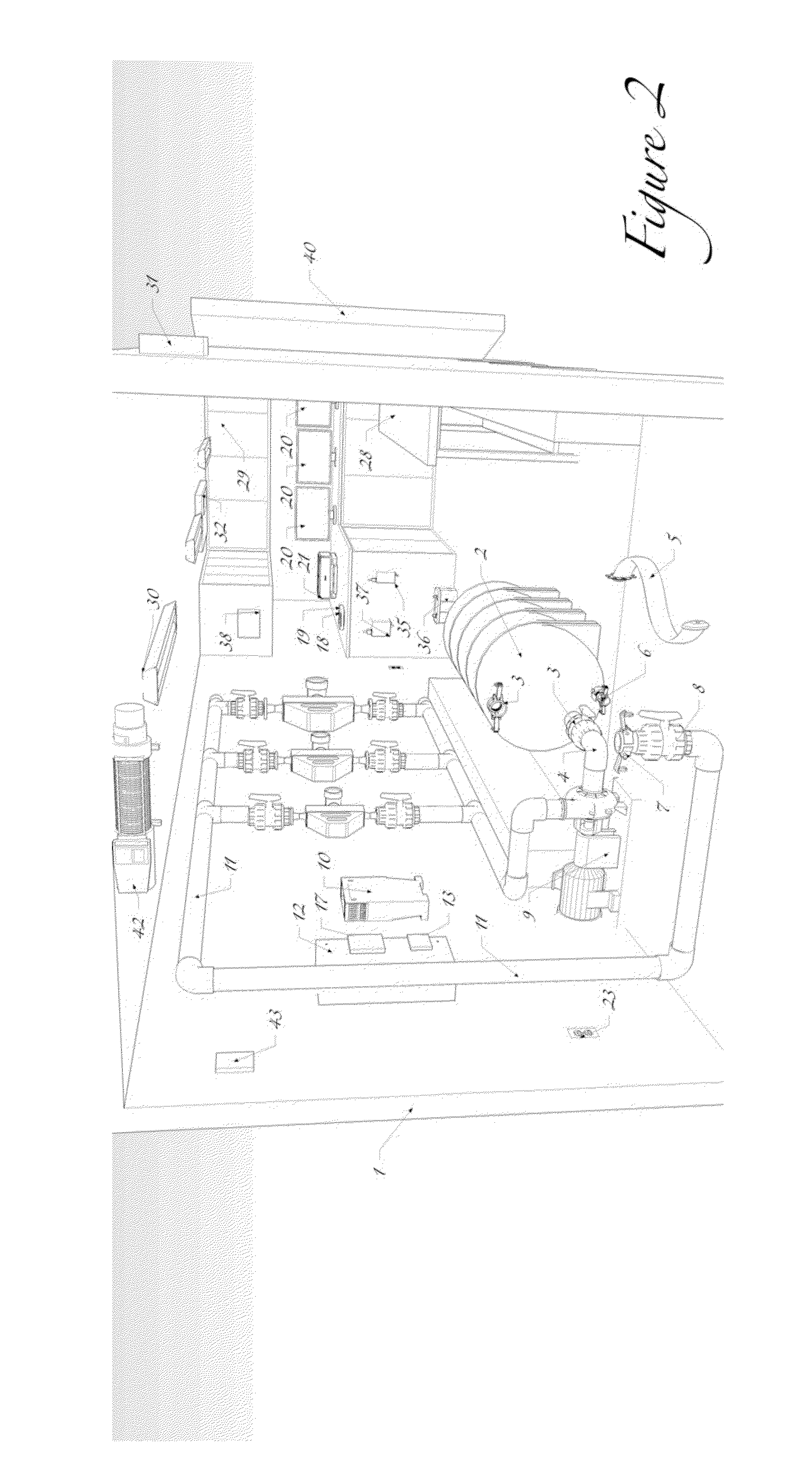Method, System and Apparatus for Convenience and Compliance with Environmental Protection Regulations and Occupational Safety Standards during On-Site Fluid Flow Meter Calibration and Verification Procedures
- Summary
- Abstract
- Description
- Claims
- Application Information
AI Technical Summary
Benefits of technology
Problems solved by technology
Method used
Image
Examples
Embodiment Construction
[0043]The present invention employs the comparison of fluid flow meters to standardized Master Meters using the dynamic start-stop reference-meter method as described in —ISO 10790:1999 (E) and as described in other standards relating to the calibration of fluid flow meters.
[0044]This invention proposes a novel configuration of fluid flow meter calibration equipment, providing a combination of solutions to the problems inherent in Existing Methods for fluid flow meter calibration and creating a process for calibrating fluid flow meters that is safe, less invasive, more convenient, more cost-effective, faster and more environmentally friendly.
DETAILED DESCRIPTION OF THE DRAWINGS
[0045]FIG. 1 depicts a sample configuration of the invention's exterior components.
[0046]FIG. 2 depicts a sample configuration of the invention's interior components, as seen from the rear access point.
[0047]FIG. 3 depicts a sample configuration of the invention's interior components, as seen from a right-wall...
PUM
 Login to View More
Login to View More Abstract
Description
Claims
Application Information
 Login to View More
Login to View More - R&D
- Intellectual Property
- Life Sciences
- Materials
- Tech Scout
- Unparalleled Data Quality
- Higher Quality Content
- 60% Fewer Hallucinations
Browse by: Latest US Patents, China's latest patents, Technical Efficacy Thesaurus, Application Domain, Technology Topic, Popular Technical Reports.
© 2025 PatSnap. All rights reserved.Legal|Privacy policy|Modern Slavery Act Transparency Statement|Sitemap|About US| Contact US: help@patsnap.com



